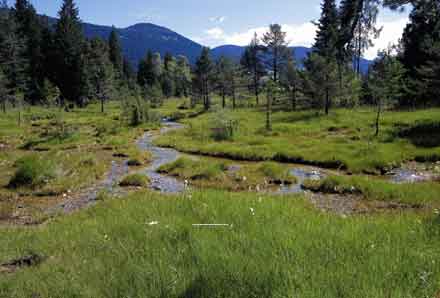|
THE
BIOTOPES
|
|
|
Today’s traveller can satisfy his curiosity by visiting
the biotopes of the magredi of St. Quirino and of the marshes of Flambro
and Virco: they not only exemplify those habitats which have nearly become
extinct today but are also the only remnants of the ancient Friuli plain.
|
|
The “Magredi” of St. Quirino |
The fauna includes many species of birds of prey. Its landscape is
certainly remarkable: during clear, winter days, these meadows seem
to blend with the snowy peaks of the Carnic pre-alps. |
|
The biotopes of Flambro and Virco |
By walking along these areas you understand how complex the agricultural habitat of this plain could have been: with its marshes, peat fields and arid plains, which were often enriched with organic fertilizer and alternated with cultivated fields, woodland and hedges which grew in patches depending on the quantity of water available. Today, water is channelled into ditches or canals along the fields, it is a driving force as well as a key element to better understanding this habitat, whose skyline is almost always interrupted with trees or with orderly hedgerows. |
|
The peat fields of Schichizza |
 |